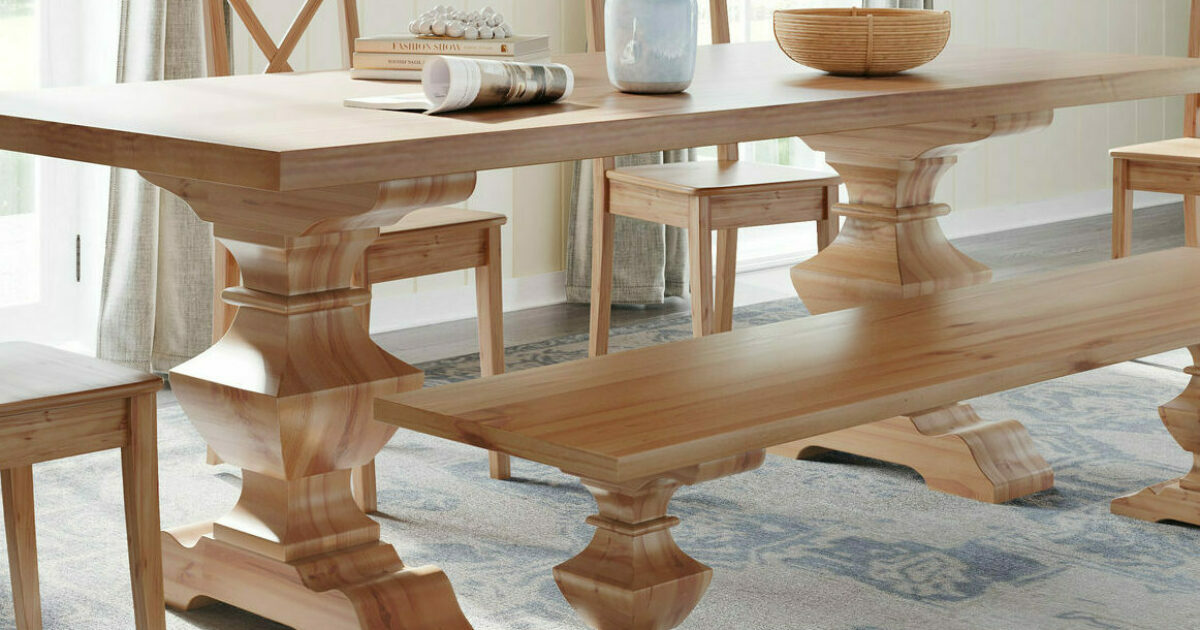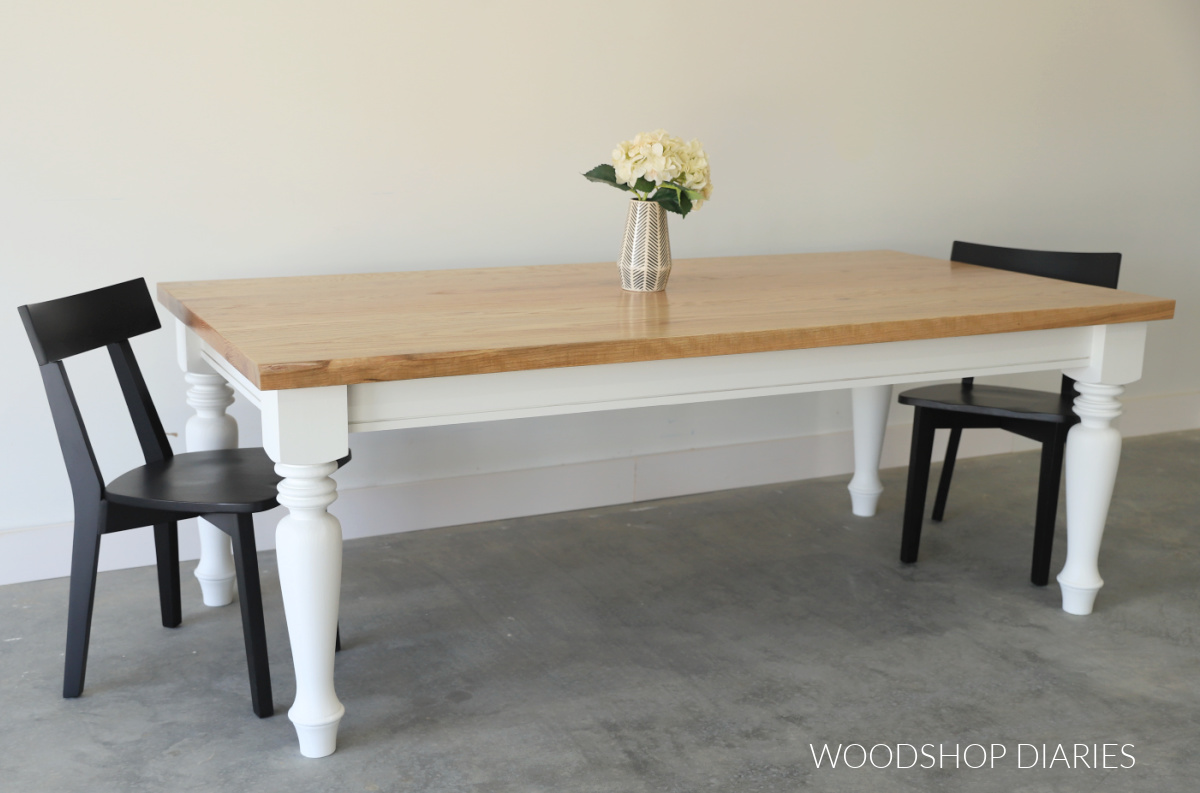Exploring the Different Sorts Of Eating Table Legs Timber for Your Eating Room
The choice of dining table legs timber can profoundly influence both the aesthetic and useful high qualities of your dining area. Strong wood options, such as oak and walnut, supply a classic look with unmatched toughness, while crafted timber alternatives provide innovative styles that simulate the splendor of natural grains.
Solid Wood Options

Unlike engineered materials, solid timber is less prone to bending and damages over time when effectively kept. Each piece of strong wood is special, showcasing private attributes that include to the appeal and personality of the dining table.
Furthermore, solid timber can be ended up in countless means, ranging from natural oils to stained coatings, enabling property owners to personalize their furniture to match their style. In recap, choosing solid timber for dining table legs not only ensures architectural stability but also boosts the aesthetic appeal of the eating location, making it a beneficial investment for any kind of home.
Engineered Timber Alternatives

Plywood, built from several layers of wood veneer, is secure and especially solid, making it an exceptional option for eating table legs. Its layered structure enables it to withstand adjustments in humidity and temperature level much better than traditional solid timber. MDF, on the other hand, supplies a smooth surface area for painting or veneering, allowing designers to attain a polished look while keeping architectural integrity.
Particleboard, commonly used in economical alternatives, supplies decent stamina and is light-weight, making it much easier to handle. It might not be as long lasting as plywood or MDF. It is important to think about the desired use and wanted visual when selecting engineered wood alternatives. These materials not just improve the functionality of dining rooms but likewise enable for better design versatility, making certain that modern and conventional designs can coexist harmoniously.
Reclaimed Wood Includes
Redeemed timber uses a special mix of sustainability and personality, making it a significantly preferred selection for dining table legs. Sourced from old barns, factories, and various other frameworks, reclaimed timber personifies a background that brand-new products just can not replicate. Each item lugs its own story, marked by unique blemishes, knots, and differing grain patterns, which add to a table's unique aesthetic charm.
Along with its aesthetic charm, redeemed timber is an ecologically friendly choice. By repurposing previously used materials, it minimizes the demand for brand-new lumber, hence aiding to save forests and decrease waste. This lines up with a growing consumer choice for lasting methods in decor.
In addition, recovered wood is often more resilient than freshly gathered timber because of its age. The all-natural drying procedure that recovered timber undergoes lead to a denser and more powerful product, making it less at risk to bending and splitting. This improves the longevity of eating tables, allowing them to endure the roughness of everyday use.
Softwood vs. Hardwood
When selecting eating table legs, comprehending the differences between softwood and hardwood is essential for attaining both aesthetic and practical objectives. Softwoods, derived from coniferous trees, such as want and cedar, are characterized by their lighter weight and convenience of adjustment. They normally exhibit a more rustic look, making them suitable for informal or country-style eating areas. Softwoods are generally less durable than hardwoods, which can be a factor to consider for family members or those seeking long life in their furnishings.
On the other hand, hardwoods, sourced from deciduous trees like cherry, maple, and oak, are renowned for their thickness, toughness, and durability. The elaborate grain patterns and rich colors of hardwoods offer a ageless and sophisticated charm, making them optimal for formal dining settings. While hardwoods often tend to be a lot more costly and much heavier, their durability against damage typically validates the investment.
Ultimately, the selection in between softwood and hardwood for eating table legs must line up with your style vision, usage demands, and budget plan, guaranteeing that your dining space reflects your personal design while remaining practical with time.

Treatments and surfaces
The aesthetic appeal and durability of table legs can be considerably enhanced through various finishes and therapies. These processes not just shield the timber from damages yet additionally raise its look, allowing it to enhance varied interior styles.
One common therapy is tarnishing, which penetrates the timber and boosts its all-natural grain while adding color. Discolorations provide an abundant, elegant look, allowing home owners to match their furnishings with existing design. Conversely, clear surfaces such as polyurethane or varnish create a safety layer without altering the timber's initial color, making sure resilience against damage.
Furthermore, natural oils, like tung or linseed oil, nurture the timber and use a subtle luster, all while being environmentally friendly. These oils allow the surface area to breathe, preventing dampness accumulation and prospective bending.
For those seeking a rustic beauty, weather-beaten or distressed coatings can be put on create an aged look, adding character to the item. Inevitably, the Click Here option of therapies and surfaces relies on personal choice, desired aesthetic appeals, and the specific timber kind, making it necessary to consider see post these aspects when selecting eating table legs for your space.
Conclusion
Solid woods, engineered options, and redeemed alternatives each deal distinctive benefits, providing to different preferences and requirements. Inevitably, the selection of wood type should align with desired style, sturdiness, and environmental considerations, enhancing the total dining experience.
The choice of dining table legs timber can greatly impact both the visual and useful high qualities of your eating space - Dining Table Legs Wood. Strong wood choices, such as oak and walnut, supply a traditional appearance with unmatched toughness, while engineered timber options use cutting-edge styles that imitate the splendor of all-natural grains. Strong timber provides an ageless top quality that can elevate the general style of a dining area. Each item of solid wood is special, showcasing individual characteristics that include to the appeal and personality of the dining table
Additionally, redeemed timber Get More Information is commonly extra resilient than freshly harvested wood due to its age.